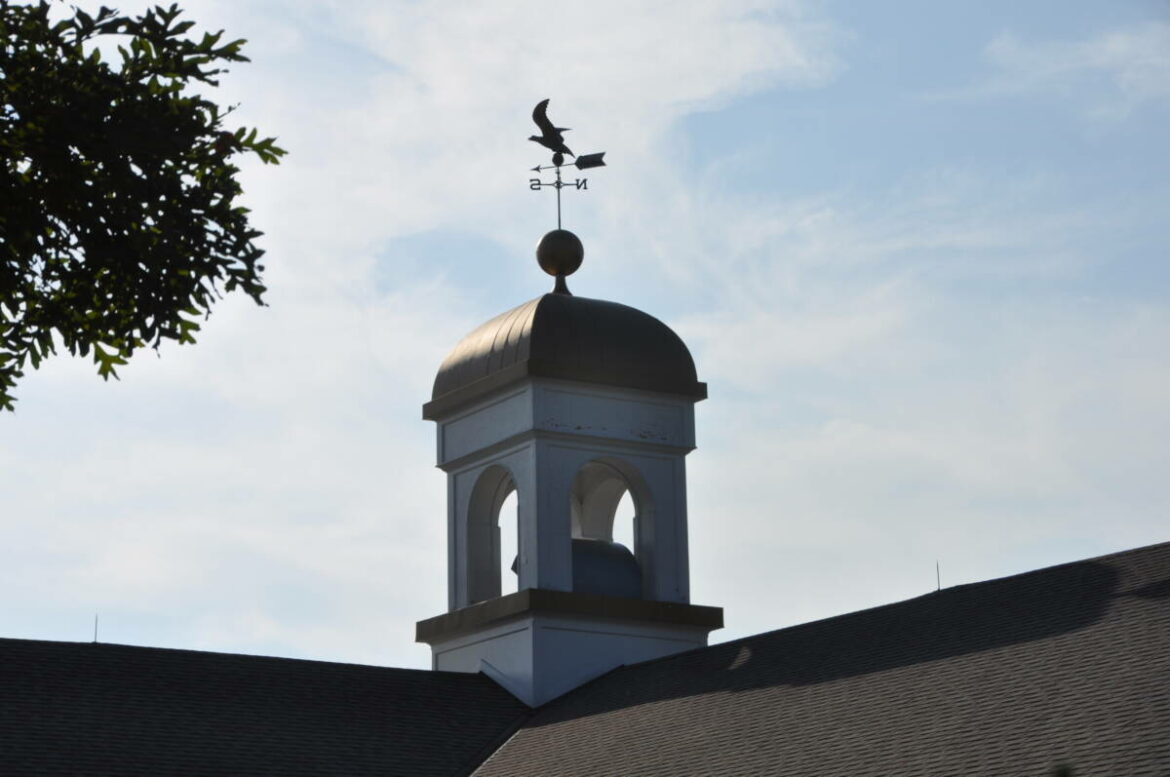MONROE, CT — A developer presented revisions to a plan for Sun Valley Glen, an eight lot residential subdivision at 1536 and 1564 Monroe Turnpike, during a recent hearing before the Inland Wetlands Commission.
The most significant change is to move a proposed roadway further from the wetlands, decreasing the disturbance from 3,800 to 1,100 square feet. The road would be 28 feet wide.
Neighbors attending the hearing on Aug. 28 continued to express their opposition, arguing that earthwork for a new development would make an area, already hit hard by recent floods, more susceptible to soil erosion.
Paula Jelly, of Cottage Street, showed a photo of her storm drain by her home with runoff from the applicant’s undeveloped property. The water flowed clear, without mud, due to the trees, grasses and underbrush preventing erosion.
The storm on Aug. 18 caused a thousand year flood. Jelly said that means there is a one-in-a-thousand chance it will happen again next year.
“Please protect my property from water runoff,” she asked commissioners. “Please protect my house from this development.”
Other residents expressed a belief their testimony is falling upon deaf ears, including Mark Lamont, of Downs Road, who said the hearings seem like a placation of the public, and expressed his opinion that approval of the cluster housing development is a foregone conclusion.
“I believe it’s just simply a matter of making everyone feel more comfortable that due diligence was done in the eyes of the law,” Lamont said.
He complained about the three minute limitation for residents to speak, and others were not happy that their letters were not read into the record during the hearing. Planning and Zoning Administrator Kathleen Gallagher assured them commissioners will do their due diligence and read every letter on their own.
Donna Konkol, of Manor Drive, said the country has had extreme weather in the past few years and expressed concern that major storms will become even more common.
Audrey Wellner, of Downs Road, said the extreme weather is cyclical. She bought her house in 1970 and, eight years later, one deluge came through, damaging her cellar, she told the commission.
“The more trees you remove and the more ground you disturb, we’re all gonna be down in the Housatonic River,” Wellner said. “I think it’s ridiculous. Leave the land alone. The more you put on the land, the worse it’s gonna get.”
More open space …
Sun Valley Glen, which is across from the former Stevenson Lumber property, would be a cluster housing development built on smaller 1.5 acre lots, leaving 34 acres as open space.
At the Aug. 28 hearing, Jason Edwards, principal of J. Edwards and Associates, an engineering and surveying firm based in Easton, went over proposed changes to the plan, which were based on feedback from the July meeting.
In addition to moving the proposed roadway, Edwards said his client would create a wetlands on what used to be Lot 9, before it was removed from the plan. This would create an additional 3,000 square feet of wetlands, he said of a proposal by Matthew Popp, of Environmental Land Solutions in Norwalk.
“We’re proposing to expand the open space to include Lot 9, adding an additional two acres,” Edwards said. This includes the wetlands creation area.
A change to the road plan would make it easier for box turtles to cross. This was based on a third party review by Dr. Michael W. Klemens, the environmental consultant hired by the town.
Klemens expressed concern over activities on open space that could lead to increased foot traffic, while disturbing the habitat for dusky salamanders.
There was discussion of making the two acres a conservation easement, instead of open space, or limiting what activities the open space could be used for.
Wildlife movement
A three-sided culvert, meant to allow water to flow beneath the road crossing, was changed to a four-sided culvert, based on input from Town Engineer James DiMeo. Once built, responsibility for maintenance falls upon the town and a four-sided structure is stronger.
The design would also be increased from two to two-and-a-half feet high, allowing the bottom six inches below the street bed to be filled with native stone or riprap.
Klemens favors a three-sided culvert, which he said is superior for wildlife movement. He said his biggest concern with a four-sided culvert is it cuts off seepage areas from the watershed. Klemens said it’s all about not separating the watershed.
DiMeo said he is open minded about the culvert and expressed the preference for a four-sided culvert based on the town’s planning and zoning.
Michael Czesnowski, of Jans Land Development LLC, which is the applicant, said he will look into an alternative solution that addresses everyone’s concerns.
Whatever design is chosen, DiMeo said none would have survived the storm on Aug. 18.
Vernal pools
Dr. Steven Danzer, an environmental expert hired by the applicant, walked the property on March 21 and wrote a letter verifying there were no vernal pools on the site. He said it was a rainy night when he visited the site, adding he also went another day.
Danzer testified that there is no topography on the site allowing for the pooling of water needed to create a vernal pool. He also visited the site in October of 2022 and did not observe the potential for vernal pools, he said.
Popp expressed his opinion that an offsite detention basin in the vicinity of where wood frogs have been found is being used by the amphibians to reproduce.
He also said their site is downstream from salamander habitats, which would not be disturbed by the development.
Klemens said he is satisfied by the applicant’s testimony about vernal pools.
The hearing was continued to Sept. 11.
All respectful comments with the commenter’s first and last name are welcome.






